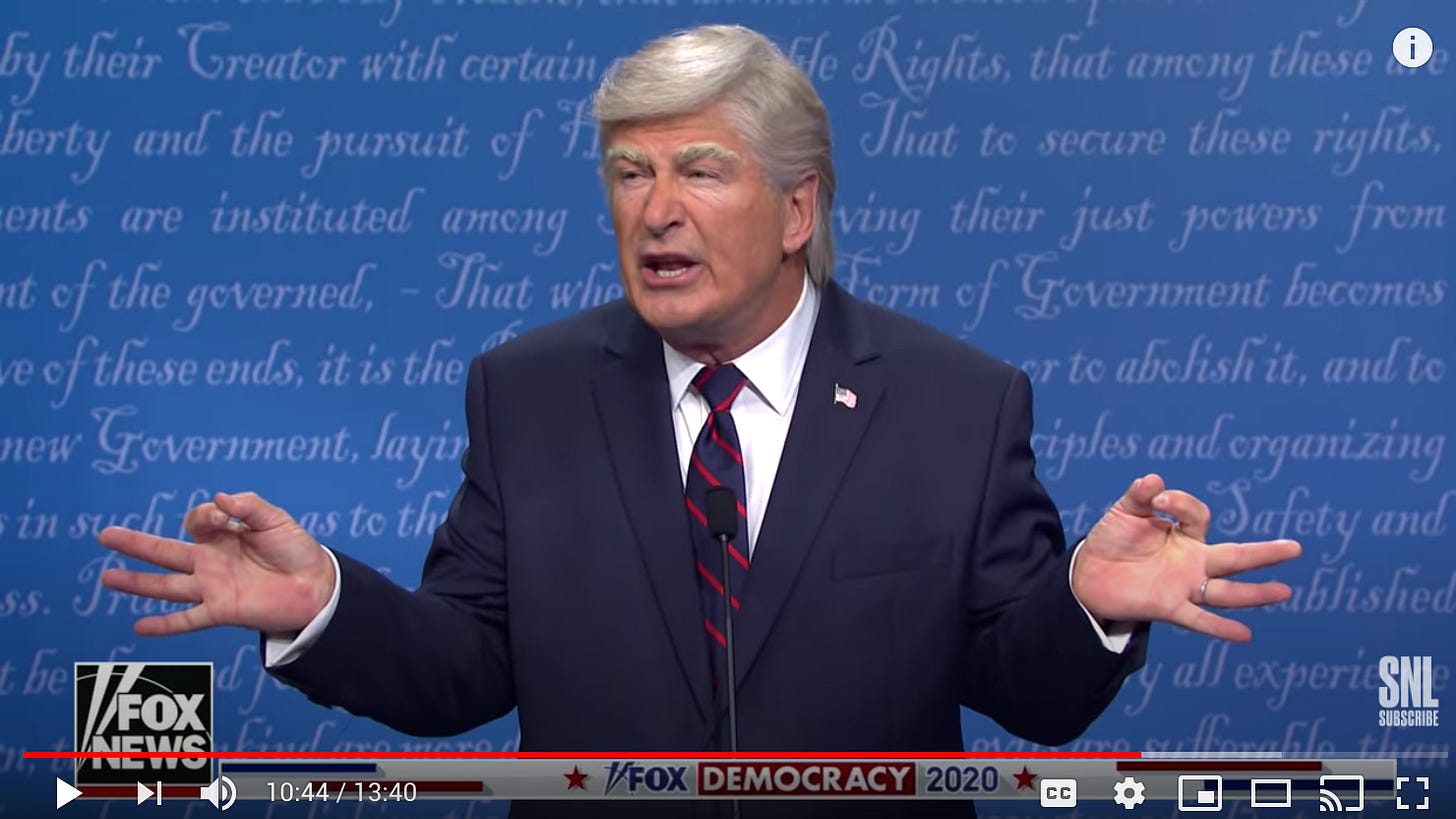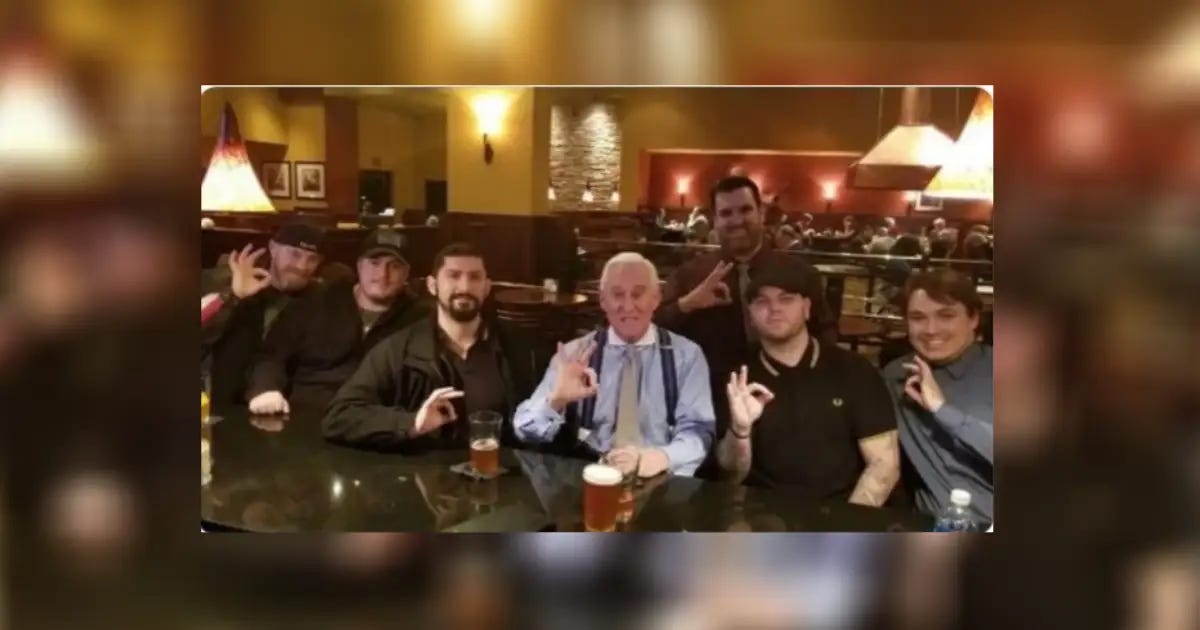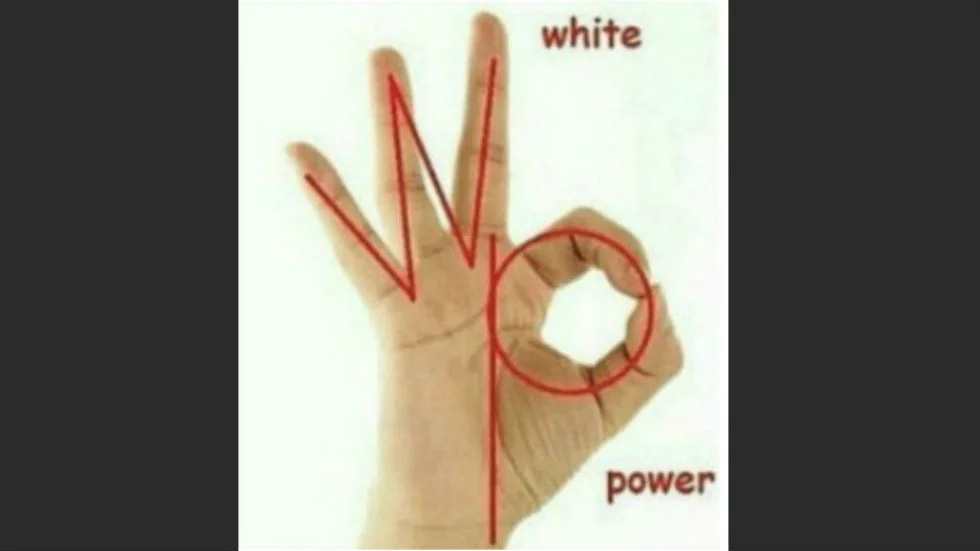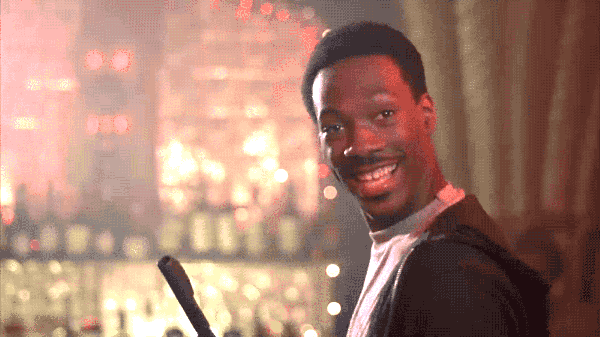Is Everything OK?
How a Hand Gesture Turned into a Hate Symbol, and What It Means for Our Communication
I’ve been writing a lot about bonding and bridging, and the inclusivity versus exclusivity of groups and communities. In the spirit of inviting more people in, I’m removing the paywall on my newsletter, and providing all content for f.r.e.e. If you’d still like to support the work, you’ll see a founders membership when you subscribe. Appreciate all subscribers; your support has meant so much. If you’re not yet subscribed, here ya go!
On Saturday Night Live’s opening night a couple weeks ago, Alec Baldwin as Trump did this:

In case anyone was wondering, this is a sideways version of the OK symbol. One that has been a sign of agreement, alignment, or approval for decades. But recently, it’s become something else entirely.
It’s become this:

This is a symbol of white power, flashed by white supremacists to identify each other in crowds of, say, protesters on opposite sides of a cause.

Saturday Night Live’s implication was that Trump would use this gesture to signal his support to white supremacist groups. In real life, he was even less subtle, telling the infamous Proud Boys to ‘stand back and stand by.’
Nowadays, when I want to reply to a Slack message or a text, I have to think twice before smashing that OK emoji; my recent go-to has been high-ten, or just a good old-fashioned thumbs up. When one of my friends or colleagues sends me the OK emoji, I know they’re not demonstrating their secret membership in a white power gang, but it does make me blink.
As Oren Segal, director of the ADL’s Center on Extremism, says, "Context is always key," Segal said. "More people than not will use the OK symbol as just 'OK.'

So why am I rethinking such a basic and universal gesture? And what’s it doing to the fabric of our communication?
The History of OK
The OK symbol has been around for centuries, signifying a positive. According to The Independent, it turned dark in early 2017, when 4Chan users decided that it was time to fuck with the world. They started “Operation O-KKK,” to trick the world into believing it was a clandestine sign of white power:
“We must flood Twitter and other social media websites with spam, claiming that the OK hand signal is a symbol of white supremacy,” one of the users posted, going on to suggest that everyone involved create fake social media accounts “with basic white girl names” to propagate the notion as widely as possible.
And behold, the supremacist tricksters of 4Chan prevailed. White nationalists started using it in public to identify each other in public. The OK sign was designated a symbol of white power by the Anti-Defamation League in September 2019, long before we had a glimmer of what 2020 was going to look like. Somewhere there’s a 4Chan bro who’s feeling proud that his cynical plot made it all the way on to SNL.
Meme Life
Like the reality star reaction GIFs we share all day long, this new usage of the OK sign is a meme. The word Meme started as a cultural equivalent to a gene in Richard Dawkins’ The Selfish Gene--a unit of an idea that gets passed through culture, solidifying connections and tribes.
The internet has coopted Dawkins’ idea wholesale; now the word meme is inseparable from the online transmission of culture through relatable words and images. Six years ago,the world of memes was much more adorable; Inc Magazine covered the rise of memes and I Can Haz Cheezeburger as the forefront of viral content business:
Sharing cat videos, creating memes, uploading photos are all ways to connect with others on mutually agreeable terms. Cat content is usually humorous, hardly ever controversial, and almost always cute.
The purpose was to create a laugh and a sense of connection around something light and silly. In many cases that emotional response is in-crowd humor. If you know, you know. If you don’t, well, then you’re the out-crowd, buddy, but no worries--the jokes were universal enough that anyone could get them. To share a meme is to invite someone in. As Abigail Posner, formerly of Google, said:
“In the language of the visual web, when we share a video or an image, we're not just sharing the object, we're also sharing in the emotional response it creates.”
But we’re a long way from cat memes, Toto. The emotional response has moved from innocent humor to include sadness, cynicism, and rage.
Bridging, Bonding and Memes
The model of bridging and bonding has been on my mind a lot as we’re witnessing the partisanship in the United States. To oversimplify, what used to feel like it was bridging--here’s a cute or funny image we can all enjoy--has incorporate in-group and out-group messaging that’s grown more niche or extreme.
One subset of memes that fascinates me are mental health memes. Depression memes have been shown to help people with depression feel like their experience is relatable, and find humor in a typically humorless disease.

But then we get the OK sign. And Hawaiian shirts, of course. And the Pepe the Frog meme, another co-optation of a non-racist symbol in the form of a frog cartoon drawn by the beleaguered Matt Furie who has been trying to reclaim his art from the alt-right for years; in 2016, he partnered with the ADL to save Pepe. In Time Magazine, Furie said:
It’s completely insane that Pepe has been labeled a symbol of hate, and that racists and anti-Semites are using a once peaceful frog-dude from my comic book as an icon of hate. It’s a nightmare, and the only thing I can do is see this as an opportunity to speak out against hate.
So What?
Like online misinformation, conspiracy theories, and other malevolent corners of the internet, it’s not easy to track. As Farhad Manjoo recently wrote about the Q-Anon cult:
Propagandists keep discovering new ways to spread misinformation; researchers like [research director of the Shorenstein Center on Media, Politics and Public Policy at Harvard’s Kennedy School, Joan] Donovan and her colleagues keep sussing them out, and, usually quite late, media and tech companies move to fix the flaws — by which time the bad guys have moved on to some other way of spreading untruths.
To understand the ‘new world’ requires cultural fluency, and one that isn’t easy to replicate. Reply-All’s Yes Yes No feature is one of my favorites, where a mystified older anchor shares an indecipherable Tweet and asks his younger colleagues to help him suss it out.
It’s like being a tourist or an anthropologist in a world not your own, and often what you find is a passing mishmash of zeitgeisty subcultures, in-jokes, and internet rumors. Unfortunately we don’t have decoders for every cultural moment. And it takes the work of academics, activists, and advocates to dig in and decode what’s happening on the fringes, subtract signal from noise, and identify what’s potentially dangerous.
Interesting Links
In September, the Anti-Defamation League registered the OK gestures as a symbol of hate, alongside 17 other hand signs, in their racist symbol database.
On my movie list: Feels Good Man, an Independent Lens doc that follows Matt Furie as he tries to reclaim his frog from the alt-right.
If you’re a walker, runner, hiker or biker, clock 11.3 miles on Strava for the election this year.



